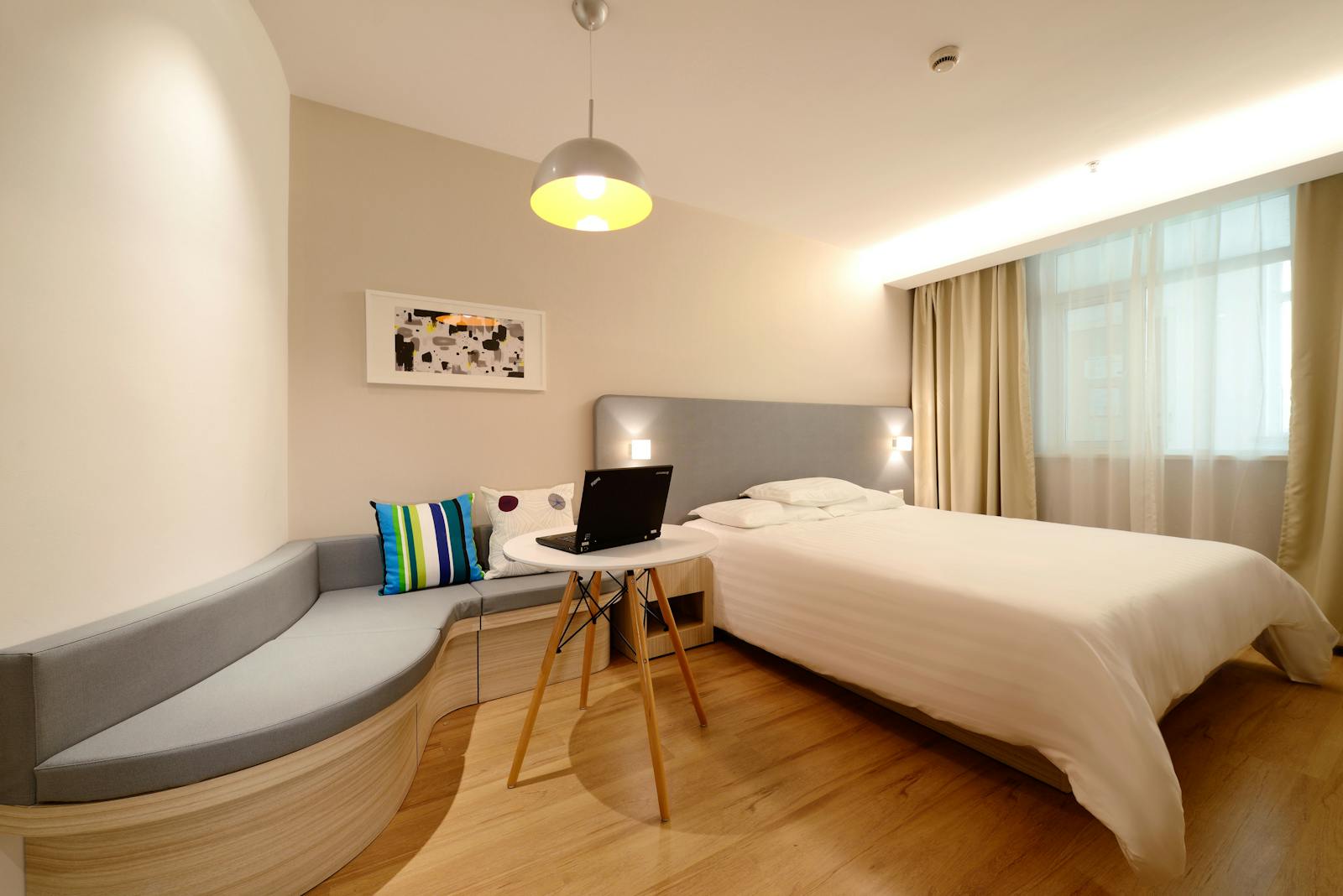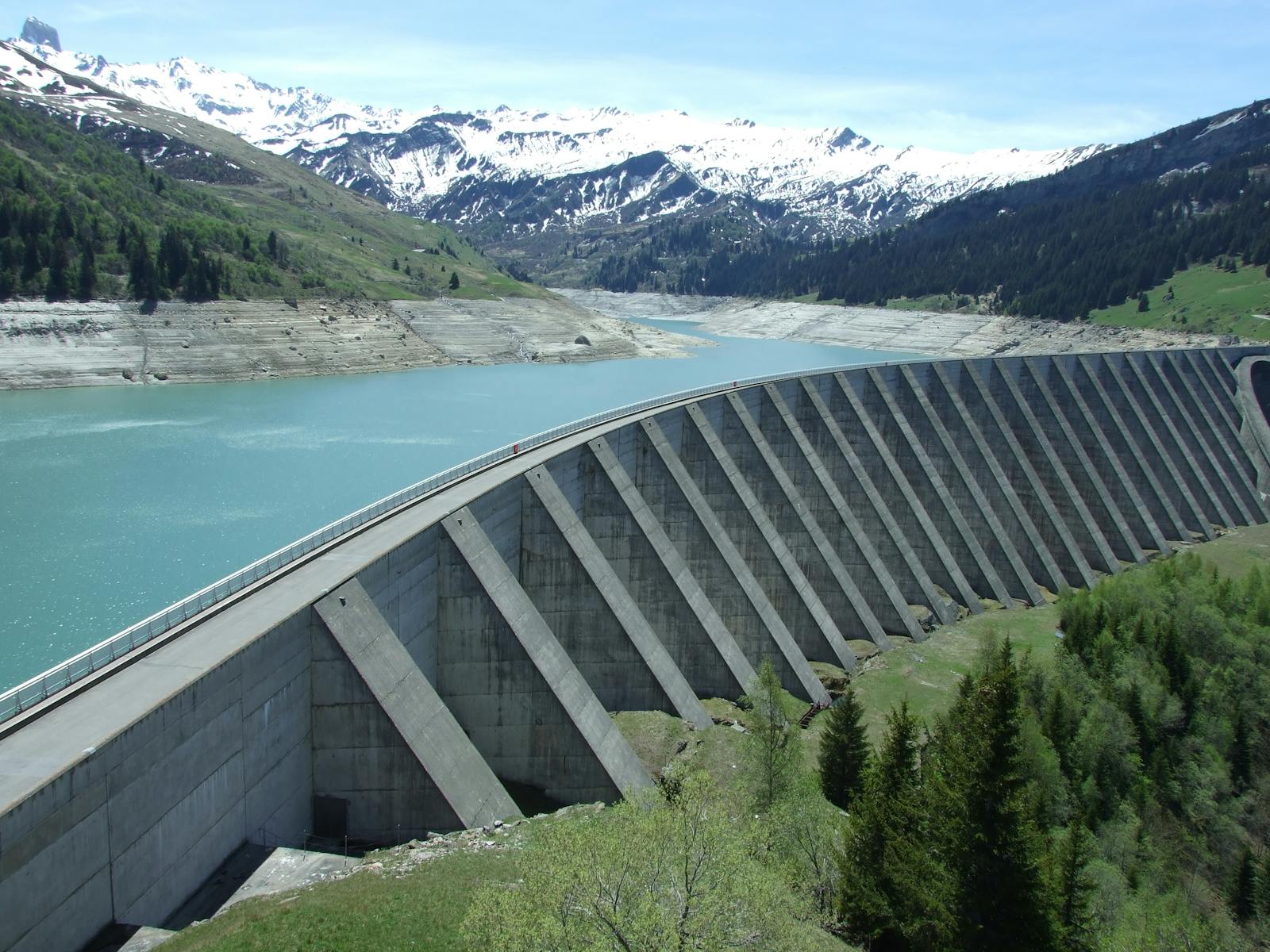construction
Innovative Solutions, Exceptional Results
INDUSTRIAL
Facility Construction:
- Design and construct industrial facilities, including factories, warehouses, and processing plants.
- Develop detailed construction plans and specifications tailored to industrial needs.
- Ensure compliance with industry standards and regulatory requirements.
Structural Engineering:
- Design and analyze structural elements to support industrial operations.
- Develop robust frameworks for heavy machinery and equipment.
- Utilize advanced modeling software for precision and safety.
Mechanical and Electrical Systems:
- Install mechanical systems, including HVAC, plumbing, and fire protection.
- Design and implement electrical systems for power distribution, lighting, and automation.
- Ensure all systems meet safety standards and operational requirements.
Civil Works:
- Execute site preparation, including excavation, grading, and foundation work.
- Construct access roads, drainage systems, and utility connections.
- Implement sustainable practices in site development and infrastructure.
Project Management:
- Oversee industrial construction projects from inception to completion.
- Coordinate with clients, architects, engineers, and subcontractors.
- Monitor project timelines, budgets, and quality to ensure successful delivery.
Equipment Installation:
- Plan and manage the installation of industrial equipment and machinery.
- Coordinate with equipment manufacturers and ensure proper setup and commissioning.
- Provide training and support for operational readiness.
Safety and Compliance:
- Develop and enforce strict safety protocols on construction sites.
- Conduct regular safety audits and risk assessments.
- Ensure all construction activities comply with local, state, and federal regulations.
Quality Control:
- Implement rigorous quality control procedures throughout the construction process.
- Conduct inspections and testing to ensure adherence to design specifications.
- Address and rectify any defects or issues promptly.
Environmental Management:
- Implement environmental protection measures during construction.
- Manage waste, reduce emissions, and minimize the environmental footprint.
- Ensure compliance with environmental regulations and standards.
Retrofitting and Upgrading:
- Assess existing industrial facilities for potential improvements.
- Design and execute retrofitting projects to enhance performance and compliance.
- Upgrade systems and structures to meet current industry standards.
Commissioning and Handover:
- Conduct comprehensive testing and commissioning of all systems and structures.
- Ensure all aspects of the facility are operational and meet client specifications.
- Provide thorough documentation and training for facility management.
Maintenance Planning:
- Develop maintenance schedules and plans for industrial facilities.
- Implement preventive and predictive maintenance strategies.
- Ensure long-term operational efficiency and safety of the facility.
Hospitality, Medicare, Education & Workplaces
Facility Construction:
- Design and construct a variety of facilities, including hotels, resorts, hospitals, clinics, schools, universities, office buildings, and corporate headquarters.
- Develop detailed plans and specifications tailored to the unique needs of each project.
- Ensure compliance with industry standards, accessibility requirements, and local regulations.
Interior Design and Furnishings:
- Create luxurious and functional interiors for diverse environments.
- Select high-quality materials and furnishings to enhance user experience.
- Incorporate modern amenities and smart technology solutions.
Recreational and Common Areas:
- Construct recreational facilities such as pools, gyms, and spas, as well as common areas including lobbies, restaurants, and conference rooms.
- Ensure these spaces are inviting, functional, and aligned with the overall design theme.
Mechanical, Electrical, and Plumbing (MEP) Systems:
- Design and install efficient HVAC, plumbing, and electrical systems.
- Integrate energy-efficient and sustainable technologies.
- Ensure all systems meet safety and operational standards.
Safety and Compliance:
- Implement stringent safety protocols throughout the construction process.
- Conduct regular inspections to ensure compliance with health and safety regulations.
- Ensure fire safety systems and emergency exits are properly installed and compliant.
Management:
- Manage construction projects from inception to completion.
- Coordinate with clients, architects, designers, and subcontractors.
- Monitor project timelines, budgets, and quality to ensure successful delivery.
Quality Control:
- Implement rigorous quality control procedures throughout the construction process.
- Conduct inspections and testing to ensure adherence to design specifications.
- Address and rectify any defects or issues promptly.
Sustainability and Environmental Management:
- Incorporate sustainable building practices and materials.
- Implement waste management and recycling programs during construction.
- Design and construct buildings that aim for LEED or other green certifications.
Specialized Areas:
- Patient Care Areas: Design and build patient care areas including wards, ICUs, and emergency rooms.
- Classrooms and Learning Spaces: Design and build functional and flexible classrooms, libraries, and resource centers.
- Office Interiors: Create flexible and modern office interiors, including open-plan areas, private offices, and meeting rooms.
- Common Areas and Amenities: Design and build common areas such as lobbies, break rooms, and cafeterias, as well as recreational amenities including fitness centers, lounges, and outdoor spaces.
Environmental Planning:
- Protection and preservation of natural resources.
- Mitigation of environmental impacts through green infrastructure and sustainable design.
- Integration of sustainability and resilience principles.
- Promotion of environmental justice and equitable distribution of benefits.
- Investments in infrastructure and workforce development.
- Support for entrepreneurship and small businesses.
- Attraction of private investment through partnerships and incentives.
- Promotion of tourism and cultural amenities.
- Establishment of clear policies and regulations.
- Collaboration among government agencies, stakeholders, and private sector.
- Monitoring and evaluation of planning initiatives.
- Promotion of transparency and accountability.
Housing & Residencia
Facility Construction:
- Design and construct a variety of facilities, including residential complexes, luxury villas, apartment buildings, and townhouses.
- Develop detailed plans and specifications tailored to the unique needs of each housing project.
- Ensure compliance with industry standards, accessibility requirements, and local regulations.
Interior Design and Furnishings:
- Create comfortable and functional interiors for diverse residential environments.
- Select high-quality materials and furnishings to enhance living experiences.
- Incorporate modern amenities and smart home technology solutions.
Recreational and Common Areas:
- Construct recreational facilities such as pools, gyms, and parks, as well as common areas including clubhouses, community centers, and playgrounds.
- Ensure these spaces are inviting, functional, and aligned with the overall design theme.
Mechanical, Electrical, and Plumbing (MEP) Systems:
- Design and install efficient HVAC, plumbing, and electrical systems.
- Integrate energy-efficient and sustainable technologies.
- Ensure all systems meet safety and operational standards.
Safety and Compliance:
- Implement stringent safety protocols throughout the construction process.
- Conduct regular inspections to ensure compliance with health and safety regulations.
- Ensure fire safety systems and emergency exits are properly installed and compliant.
Project Management:
- Manage housing construction projects from inception to completion.
- Coordinate with clients, architects, designers, and subcontractors.
- Monitor project timelines, budgets, and quality to ensure successful delivery.
Quality Control:
- Implement rigorous quality control procedures throughout the construction process.
- Conduct inspections and testing to ensure adherence to design specifications.
- Address and rectify any defects or issues promptly.
Sustainability and Environmental Management:
- Incorporate sustainable building practices and materials.
- Implement waste management and recycling programs during construction.
- Design and construct buildings that aim for LEED or other green certifications.
Specialized Areas:
- Living Spaces: Design and build functional and comfortable living spaces, including bedrooms, living rooms, and kitchens.
- Outdoor Spaces: Develop landscaped gardens, patios, and outdoor entertainment areas.
- Community Amenities: Create shared amenities such as swimming pools, fitness centers, and multipurpose rooms.
Retrofitting and Upgrading:
- Assess existing residential buildings for potential improvements.
- Design and execute retrofitting projects to enhance comfort, efficiency, and compliance.
- Upgrade systems and structures to meet current housing standards.
Commissioning and Handover:
- Conduct comprehensive testing and commissioning of all systems and structures.
- Ensure all aspects of the housing facility are operational and meet client specifications.
- Provide thorough documentation and training for property management.
Maintenance Planning:
- Develop maintenance schedules and plans for residential facilities.
- Implement preventive and predictive maintenance strategies.
- Ensure long-term operational efficiency and safety of the housing facility.
Rehabilitation, Retrofitting & Upgradation
Assessment and Evaluation:
- Structural Assessment: Conduct detailed assessments of existing structures to identify deficiencies, vulnerabilities, and areas for improvement.
- Safety Inspections: Perform safety inspections to detect hazards and ensure compliance with current building codes and regulations.
- Condition Surveys: Carry out condition surveys to evaluate the current state of building components and systems.
Design Solutions:
- Custom Retrofitting Plans: Develop tailored retrofitting solutions to enhance structural integrity, seismic resilience, and overall safety.
- Engineering Analysis: Utilize advanced engineering analysis and modeling to design effective retrofit strategies.
- Innovative Technologies: Incorporate innovative materials and technologies to improve performance and durability.
Structural Rehabilitation:
- Repair Works: Undertake comprehensive repair works to address structural damage and deterioration.
- Restoration Projects: Restore historical and heritage buildings while preserving their architectural integrity.
- Strengthening: Implement strengthening techniques to enhance the load-bearing capacity of structures.
System Upgradation:
- Electrical Upgrades: Upgrade electrical systems to meet modern standards and accommodate increased power demands.
- Plumbing Enhancements: Improve plumbing systems for better water efficiency and reliability.
- HVAC Improvements: Upgrade HVAC systems for enhanced climate control and energy efficiency.
Energy Efficiency and Sustainability:
- Insulation and Weatherproofing: Install advanced insulation and weatherproofing solutions to enhance energy efficiency.
- Renewable Energy Integration: Integrate renewable energy systems such as solar panels and wind turbines.
- Green Building Practices: Implement green building practices and materials to minimize environmental impact.
Compliance and Safety:
- Building Code Compliance: Ensure all rehabilitation and retrofitting work complies with current building codes and regulations.
- Fire Safety Upgrades: Install and upgrade fire safety systems, including alarms, sprinklers, and fire-resistant materials.
- Accessibility Improvements: Modify structures to enhance accessibility and comply with ADA standards.
Project Management:
- Comprehensive Planning: Develop detailed project plans, timelines, and budgets for rehabilitation and retrofitting projects.
- Coordination and Oversight: Coordinate with architects, engineers, contractors, and stakeholders to ensure seamless project execution.
- Quality Assurance: Implement rigorous quality control measures to ensure the highest standards of workmanship.
Quality Control and Assurance:
- Inspection and Testing: Conduct thorough inspections and testing throughout the rehabilitation and retrofitting process.
- Defect Rectification: Promptly address and rectify any defects or issues that arise during construction.
- Documentation: Maintain comprehensive documentation of all work performed for future reference and compliance.
Commissioning and Handover:
- System Testing: Perform comprehensive testing of all upgraded systems and components.
- Client Training: Provide training and documentation to clients for the operation and maintenance of new systems.
- Final Handover: Ensure all aspects of the project are completed
Hydraulic Structures
Design and Engineering:
- Hydraulic Analysis: Conduct detailed hydraulic analysis to understand water flow dynamics and pressures.
- Structural Design: Design structures such as dams, spillways, canals, and levees to manage water flow and prevent flooding.
- Computer Modeling: Utilize advanced computer modeling and simulation tools to optimize design and performance.
Construction and Installation:
- Foundation Preparation: Ensure proper foundation preparation for stability and durability.
- Structural Components: Construct concrete, steel, or composite structures tailored to hydraulic requirements.
- Precision Installation: Employ specialized techniques for precise and effective installation in water environments.
Maintenance and Rehabilitation:
- Periodic Inspections: Conduct regular inspections to assess structural integrity and hydraulic functionality.
- Repair and Rehabilitation: Implement repair and rehabilitation strategies to address wear, erosion, or structural damage.
- Upgradation: Upgrade hydraulic structures to enhance performance and adapt to changing environmental conditions.
Environmental Considerations:
- Erosion Control: Incorporate erosion control measures to protect hydraulic structures from sedimentation and erosion.
- Fish Passage: Design fish passages and environmental flow releases to maintain aquatic ecosystems.
- Sustainable Practices: Integrate sustainable construction practices and materials to minimize environmental impact.
Fire Protection Engineering:
- Design fire suppression systems including sprinklers, standpipes, and fire pumps.
- Specify fire detection and alarm systems for early warning of fire incidents.
- Design smoke control systems to manage smoke movement in case of fire.
- Ensure compliance with fire codes and regulations for life safety.
- Design and integrate building automation systems for centralized control of MEP systems.
- Specify sensors, actuators, and controllers for monitoring and regulating building conditions.
- Implement energy management strategies for optimizing MEP system performance.
- Provide remote monitoring and diagnostics capabilities for proactive maintenance.
- Perform energy modeling to evaluate the energy performance of MEP systems.
- Analyze energy consumption and identify opportunities for energy savings.
- Recommend energy-efficient technologies and design strategies.
- Provide life cycle cost analysis to assess the economic viability of energy-saving measures.
Types of Hydraulic Structures:
- Dams and Reservoirs: Construct dams for flood control, water storage, and hydroelectric power generation.
- Spillways and Outlet Works: Design spillways and outlet works to release excess water safely.
- Canals and Channels: Build canals and channels for irrigation, navigation, and water distribution.
- Levees and Flood Walls: Erect levees and flood walls to protect against riverine and coastal flooding.
- Pumping Stations: Install pumping stations for water supply, drainage, and wastewater management.
- Locks and Docks: Construct locks and docks for navigation and maritime transportation.
Innovation and Technology:
- Advanced Materials: Explore the use of advanced materials for improved durability and performance.
- Smart Infrastructure: Integrate smart technologies for real-time monitoring and adaptive management.
- Climate Resilience: Design hydraulic structures with climate change considerations to mitigate future risks.
Religious Structures
Architectural Design:
- Sacred Design Principles: Incorporate religious and cultural aesthetics into architectural designs.
- Symbolism and Iconography: Integrate symbolic elements and iconography reflective of religious traditions.
- Community Spaces: Design spaces for worship, meditation, and communal gatherings.
Construction Materials and Techniques:
- Traditional Materials: Utilize traditional materials such as stone, wood, and stained glass for authenticity.
- Craftsmanship: Employ skilled craftsmen to ensure intricate detailing and craftsmanship.
- Modern Adaptations: Integrate modern construction techniques for structural integrity and durability.
Spiritual and Functional Spaces:
- Sanctuary Design: Create serene and inspiring sanctuaries for religious ceremonies and rituals.
- Chapels and Prayer Rooms: Design intimate spaces for prayer, meditation, and reflection.
- Community Halls: Build multifunctional spaces for community events and gatherings.
Historical Preservation and Restoration:
- Preservation Expertise: Restore historical religious structures while preserving their architectural heritage.
- Conservation Techniques: Use specialized conservation techniques to maintain original features.
- Adaptive Reuse: Repurpose religious buildings for contemporary uses while respecting their historical significance.
Sustainability and Eco-friendly Practices:
- Energy Efficiency: Incorporate energy-efficient systems and renewable energy sources.
- Environmental Impact: Implement sustainable construction practices to minimize ecological footprint.
- Green Building Certifications: Design religious structures to achieve LEED or equivalent certifications.
Interfaith and Inclusivity:
- Interfaith Spaces: Create inclusive spaces that accommodate diverse religious practices and beliefs.
- Universal Accessibility: Ensure accessibility for people of all abilities, including ramps and accessible facilities.
- Cultural Sensitivity: Respect cultural diversity and incorporate design elements that resonate with various religious communities.
Community Engagement and Collaboration:
- Stakeholder Consultation: Collaborate with religious leaders, communities, and stakeholders throughout the design and construction process.
- Public Outreach: Engage local communities to foster understanding and support for the project.
- Community Use: Design facilities that serve not only religious purposes but also community needs and activities.
Sacred Art and Décor:
- Artistic Expression: Commission religious artworks and sculptures that enhance spiritual ambiance.
- Decorative Elements: Incorporate decorative elements such as murals, mosaics, and religious symbols.
- Custom Furnishings: Design custom furnishings and fixtures that complement the architectural style and function.
Technological Integration:
- Audiovisual Systems: Install audiovisual systems for religious ceremonies and educational purposes.
- Security and Safety: Implement state-of-the-art security systems to protect religious structures and their occupants.
- Smart Building Features: Integrate smart technology for enhanced management and operational efficiency.
Thoroughfare
Urban Planning and Design:
- Traffic Analysis: Conduct comprehensive traffic studies to assess current and future traffic demands.
- Road Network Design: Design efficient road networks and intersections to optimize traffic flow.
- Pedestrian Facilities: Integrate sidewalks, crosswalks, and pedestrian-friendly features for safe movement.
Road Construction and Maintenance:
- Pavement Design: Design durable and smooth pavements suitable for various traffic loads.
- Utility Coordination: Coordinate with utility providers to integrate underground utilities and minimize disruptions.
- Stormwater Management: Implement drainage systems and retention basins to prevent flooding and ensure water quality.
Transportation Infrastructure:
- Public Transport Integration: Design bus lanes, transit stops, and terminals to facilitate public transport connectivity.
- Cycling Infrastructure: Develop bike lanes, racks, and paths to promote sustainable transportation options.
- Smart Transportation Solutions: Implement intelligent transportation systems (ITS) for real-time traffic monitoring and management.
Safety and Accessibility:
- Road Safety Measures: Install traffic signals, signage, and road markings to enhance safety for all road users.
- ADA Compliance: Ensure sidewalks, crossings, and facilities comply with Americans with Disabilities Act (ADA) standards.
- Emergency Response Planning: Develop emergency response plans to manage incidents and ensure quick clearance.
Environmental Considerations:
- Green Infrastructure: Incorporate green spaces, trees, and landscaping to improve air quality and aesthetics.
- Sustainable Practices: Implement sustainable construction methods and materials to reduce environmental impact.
- Noise and Pollution Control: Mitigate noise and air pollution through sound barriers and emission-reducing measures.
Project Management and Coordination:
- Timeline and Budget Management: Develop detailed project schedules and budgets to ensure timely completion.
- Stakeholder Engagement: Collaborate with stakeholders including local communities, businesses, and government agencies.
- Quality Assurance: Implement quality control measures to meet design specifications and regulatory requirements.
Technological Integration:
- Traffic Management Systems: Deploy advanced traffic management systems for congestion reduction and efficient traffic flow.
- GIS and Mapping: Utilize Geographic Information Systems (GIS) for spatial analysis and data-driven decision-making.
- Remote Sensing: Employ remote sensing technologies for monitoring road conditions and infrastructure performance.
Types of Thoroughfare Projects:
- Highways and Expressways: Construct major highways and expressways for regional and interstate travel.
- City Streets: Design urban streets and avenues for local traffic and pedestrian movement.
- Bridges and Overpasses: Build bridges and overpasses to facilitate crossing over water bodies and other thoroughfares.
- Tunnels: Construct tunnels to provide underground passages for roads and transportation.
- Roundabouts and Interchanges: Develop roundabouts and interchanges to manage complex intersections and traffic flows.






